 Michael Jantzen is known for sustainable designs that range from down-to-earth realities to pie-in-the-sky concepts that pose solutions but, equally powerfully, ask questions about the nature and direction of nature-based design.
Michael Jantzen is known for sustainable designs that range from down-to-earth realities to pie-in-the-sky concepts that pose solutions but, equally powerfully, ask questions about the nature and direction of nature-based design.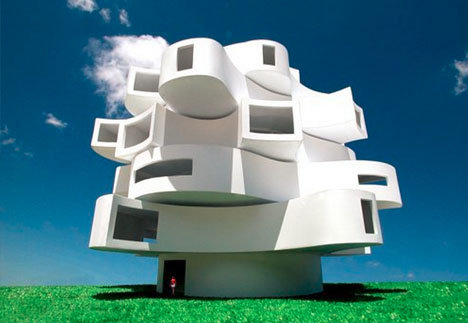
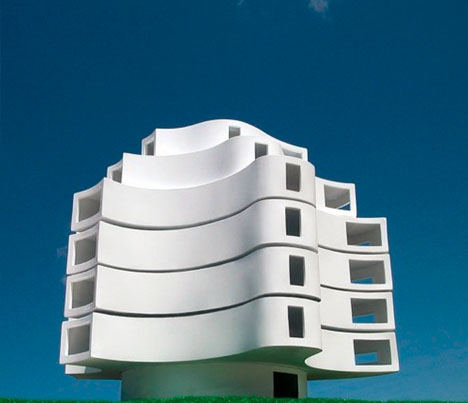 One such challenging project is this wind-shaped pavilion -depicted here as a rural construct, it would be compelling in urban environments (where its density would also make the most sense).
One such challenging project is this wind-shaped pavilion -depicted here as a rural construct, it would be compelling in urban environments (where its density would also make the most sense).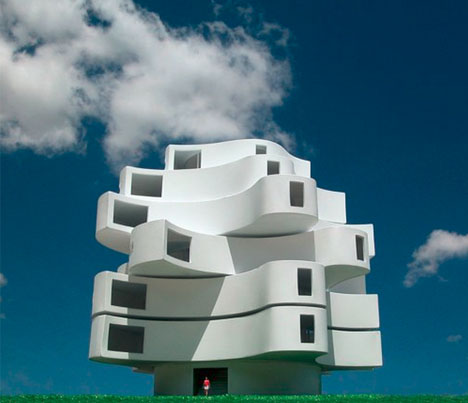 So how does it work? “The Wind Shaped Pavilion is a design proposal for a large fabric structure that can be used as a public or private pavilion. As a lightweight fabric structure, the wind slowly and randomly rotates each of the six segments around a central open support frame. This continually alters the shape of the pavilion, while at the same time generating electrical power for its nighttime illumination.”
So how does it work? “The Wind Shaped Pavilion is a design proposal for a large fabric structure that can be used as a public or private pavilion. As a lightweight fabric structure, the wind slowly and randomly rotates each of the six segments around a central open support frame. This continually alters the shape of the pavilion, while at the same time generating electrical power for its nighttime illumination.”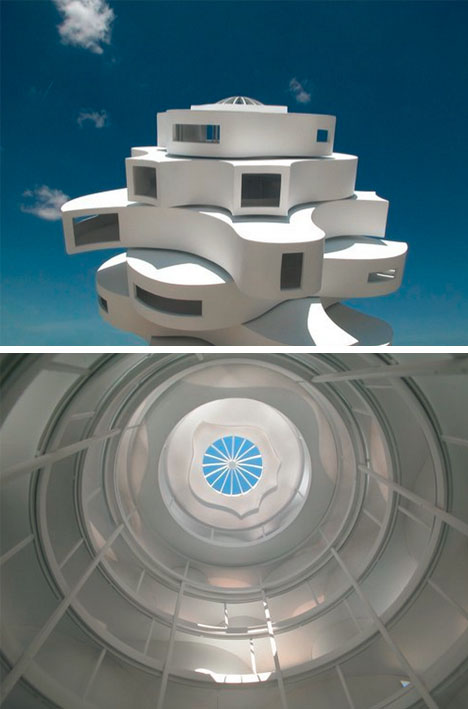 And how would it play out in practice? “The shape of the structure starts out as a relatively symmetrical form. Then the wind begins to alter that shape randomly, with only a slim chance of ever returning to its original symmetry. If the structure’s scale and the materials were to change, it could become an apartment complex, and or some other commercial building. In this case, the occupants could take control and rotate the segments to adjust to changing desires or needs, such as weather conditions, best views, etc.”
And how would it play out in practice? “The shape of the structure starts out as a relatively symmetrical form. Then the wind begins to alter that shape randomly, with only a slim chance of ever returning to its original symmetry. If the structure’s scale and the materials were to change, it could become an apartment complex, and or some other commercial building. In this case, the occupants could take control and rotate the segments to adjust to changing desires or needs, such as weather conditions, best views, etc.”
Breeze-Shaped Building: Wind Rotates Floors, Makes Power
Food for Thought: Dining Room Table + Built-In Fireplace
 If design is a narrative, then Michael Harboun is most certainly a storyteller: “Warmpath tells the story of two familiar objects, a table and a stove, meeting on a cold winter day. Their dialogue gives shape to an unexpected object.”
If design is a narrative, then Michael Harboun is most certainly a storyteller: “Warmpath tells the story of two familiar objects, a table and a stove, meeting on a cold winter day. Their dialogue gives shape to an unexpected object.”
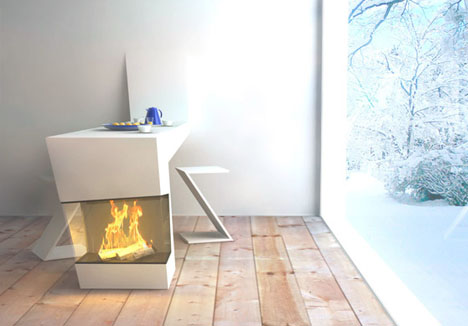 Unlike some of his other more experimental futuristic projects, this is a sort of when-Harry-met-Sally piece, expressive like his inked figure drawings rather than being a suggestion about the way things should be.
Unlike some of his other more experimental futuristic projects, this is a sort of when-Harry-met-Sally piece, expressive like his inked figure drawings rather than being a suggestion about the way things should be.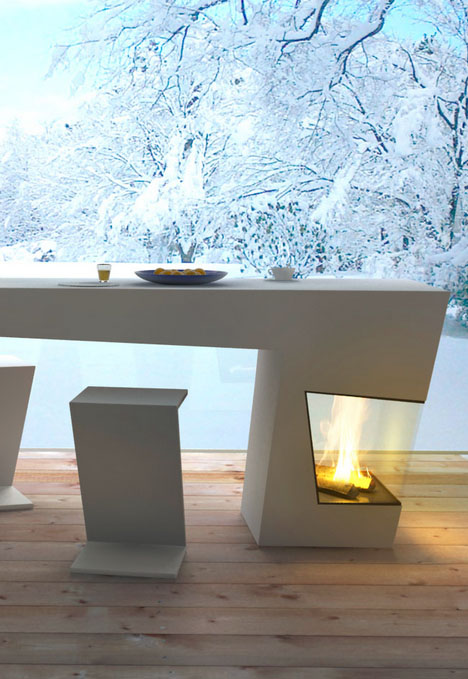 “The conducts of the stove run through the surface of the table. The Corian material is able to resist to high temperatures and cools down the heat to a comfortable and warm feeling.”
“The conducts of the stove run through the surface of the table. The Corian material is able to resist to high temperatures and cools down the heat to a comfortable and warm feeling.”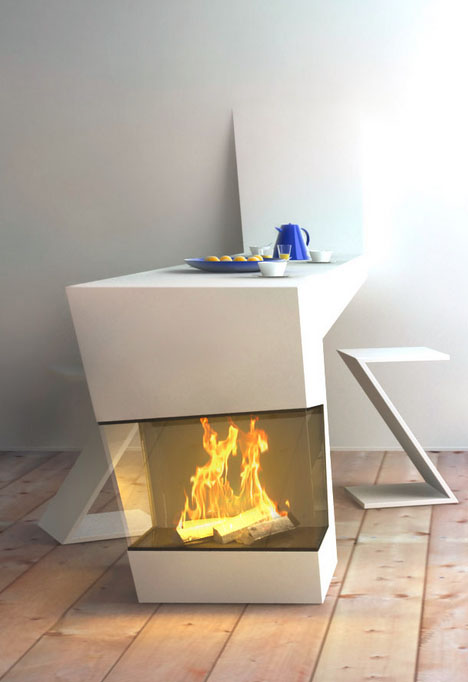 Of himself, Harbourn writes: “While design is commonly described as the union of emotional and rational processes by bringing the aesthetic and the functional together, I believe it has evolved into something much deeper today. Now have to be considered new values inside the design process, which are the psychological and the philosophical. In my projects, I tend to question these new values. By sketching a hypothetical vision of tomorrow’s products & interactions, I aim to make people react and debate about the fascinating evolution of our daily objects.”
Of himself, Harbourn writes: “While design is commonly described as the union of emotional and rational processes by bringing the aesthetic and the functional together, I believe it has evolved into something much deeper today. Now have to be considered new values inside the design process, which are the psychological and the philosophical. In my projects, I tend to question these new values. By sketching a hypothetical vision of tomorrow’s products & interactions, I aim to make people react and debate about the fascinating evolution of our daily objects.”
Artistic Iron Handrails for Ultimate Home Personalization
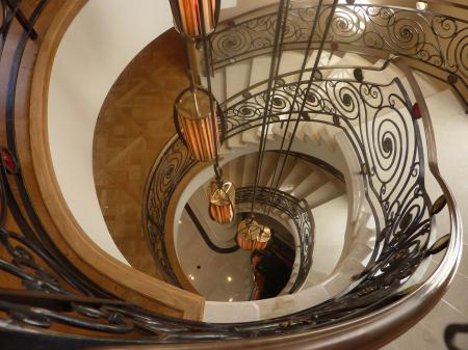
It is the little things that make a house a home – those small touches that make your home unlike any other in the world. Forged iron hand railings are an excellent way to add this type of personality around your indoor and outdoor staircases. (The examples here are all via Irish company Bushy Park Ironworks.)
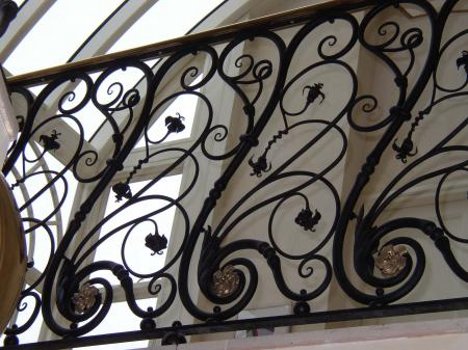
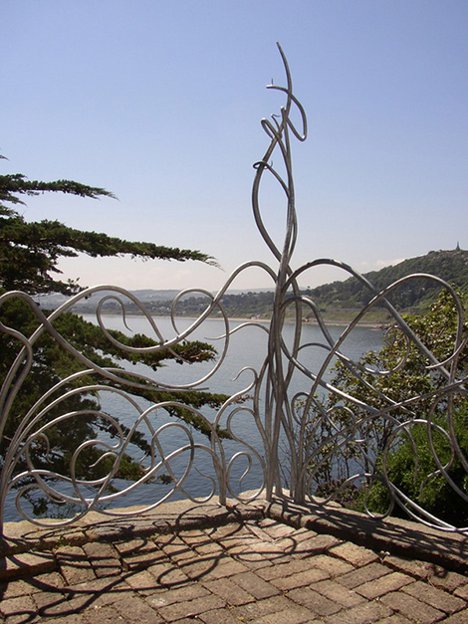 Ranging from elegant classic shapes to organic curves and swirls, the iron railings and balustrades take staircases from boring and samey to totally unique.
Ranging from elegant classic shapes to organic curves and swirls, the iron railings and balustrades take staircases from boring and samey to totally unique.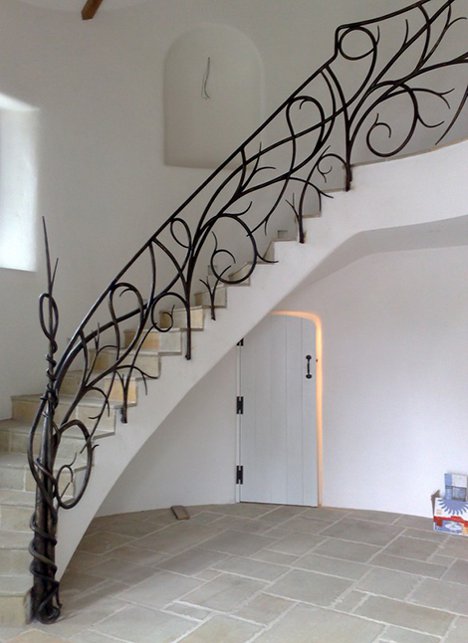
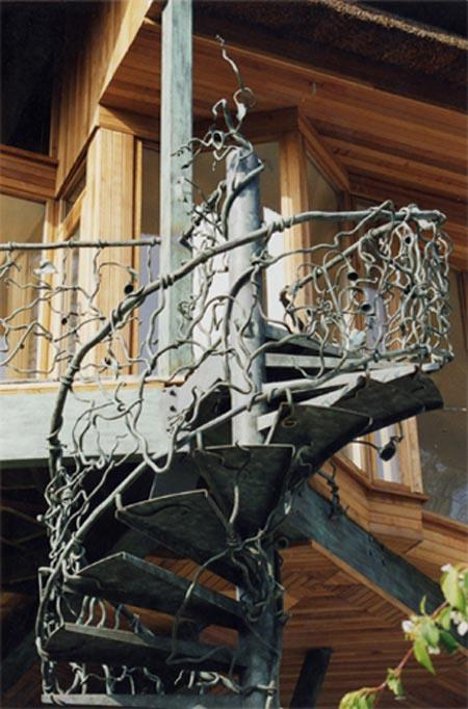 The contemporary railings are an update on the old classic wrought iron railing designs that once graced homes around the world. Rather than seeming visually heavy and outdated like their predecessors, the modern versions are graceful and airy.
The contemporary railings are an update on the old classic wrought iron railing designs that once graced homes around the world. Rather than seeming visually heavy and outdated like their predecessors, the modern versions are graceful and airy.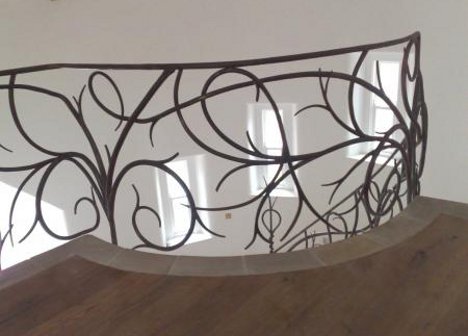
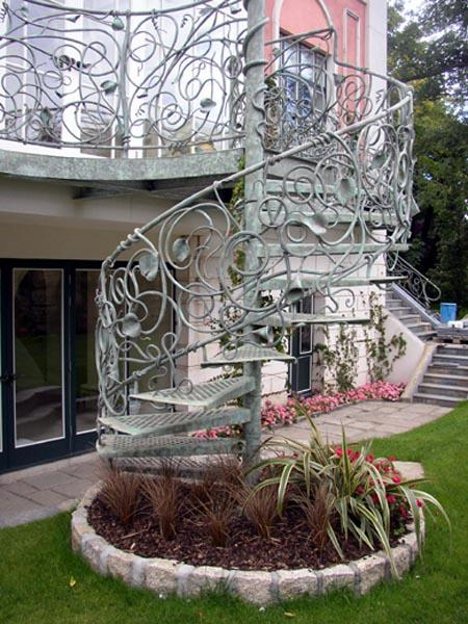 This new age of iron balustrades incorporates materials other than iron in some of the surprisingly beautiful creations. Some contain glass, ceramics, stone and wood alongside a variety of metals. The end result is an endless variety of totally personalized touches for the home.
This new age of iron balustrades incorporates materials other than iron in some of the surprisingly beautiful creations. Some contain glass, ceramics, stone and wood alongside a variety of metals. The end result is an endless variety of totally personalized touches for the home.The importance of curb appeal
Spectacular Lake House
Subway Tile Wainscoting Puts Bathrooms on the Right Track
 It repels water. It looks clean. It works with many architectural styles. Looks like bathrooms have a ticket to a no-brainer
It repels water. It looks clean. It works with many architectural styles. Looks like bathrooms have a ticket to a no-brainer
Wainscoting was designed hundreds of years ago in a marriage of form and function to enhance the look of a room while protecting the bottom half of the walls from dirt and damage. It has since evolved to suit different architectural styles and spaces. Today board and batten, beadboard and tile are the most prevalent types, with subway tile proving to be the smartest application choice for bathrooms.
Subway tile wainscoting is both decoratively charming and functional. In joining tile to tile (wainscot to floor), a tight, water-sealed seam is created, important in bathroom applications. Tile wainscoting may also act as a backsplash or tub surround in these spaces. As history has proven, rectangular, tightly grouted tile walls are sanitary and durable. They’re guaranteed to charm in both renovated spaces and new construction.
Iconic Architecture: 10 Must-Know Modern Homes
 On some days it seems that modern architecture has 10 times as many detractors as proponents, even though the movement has influenced a great deal of residential architecture — from open floor plans to means of construction. Some of the dislike for modernism can be attributed to the way it broke with the classical tradition, even though some histories trace modern architecture from 19th-century neoclassicism and the Industrial Revolution to 20th-century manufacturing. Many views of modern architecture are oversimplified, and even the significant houses of the early and mid-20th centuries are a varied bunch that deserve close examination.
On some days it seems that modern architecture has 10 times as many detractors as proponents, even though the movement has influenced a great deal of residential architecture — from open floor plans to means of construction. Some of the dislike for modernism can be attributed to the way it broke with the classical tradition, even though some histories trace modern architecture from 19th-century neoclassicism and the Industrial Revolution to 20th-century manufacturing. Many views of modern architecture are oversimplified, and even the significant houses of the early and mid-20th centuries are a varied bunch that deserve close examination.
This story kicks off a "Must-Know Modern" series, which will take in-depth looks at 10 icons of modern residential architecture, presenting their architecture and the stories behind them. The houses, outlined here, span from 1909 to 1951, through two world wars and the Great Depression. As will be seen, these and other events contributed to the acceptance and influence of modern architecture.
Spectacular Three-Story Bachelor Mansion in Los Angeles
 This luxury villa of Beverly Hills is a tasty tribute to contemporary architecture. The alchemy of the volumes, illuminated streams, the sweeping glass walls, the juxtaposition of stone and mahogany and many other elements combine to provide a full picture of magic, Where the border between dream and reality becomes very thin. It could not be otherwise, given that the house league to its origins Yechiel “Eli” Yogev, author of the Caltrans Los Angeles. One of the most characteristic is the ladder that connects the three levels, whose sculptural style leaves you speechless. The cellar, With 500 bottles, Has an artistic cut, which confirms the attention paid to all rooms. Then there is the rooftop pool, whose water is a poem full dialectic, which does not go unnoticed, regardless of personal taste. This masterpiece Finely articulated, explores a new vocabulary for seduce with a strong emotional charge. The result is breathtaking, as is the price: 12.1 million dollars.
This luxury villa of Beverly Hills is a tasty tribute to contemporary architecture. The alchemy of the volumes, illuminated streams, the sweeping glass walls, the juxtaposition of stone and mahogany and many other elements combine to provide a full picture of magic, Where the border between dream and reality becomes very thin. It could not be otherwise, given that the house league to its origins Yechiel “Eli” Yogev, author of the Caltrans Los Angeles. One of the most characteristic is the ladder that connects the three levels, whose sculptural style leaves you speechless. The cellar, With 500 bottles, Has an artistic cut, which confirms the attention paid to all rooms. Then there is the rooftop pool, whose water is a poem full dialectic, which does not go unnoticed, regardless of personal taste. This masterpiece Finely articulated, explores a new vocabulary for seduce with a strong emotional charge. The result is breathtaking, as is the price: 12.1 million dollars.














Houses made out of recycled materials
 The issue of recycling has been an important one for some years, but recently, with councils resorting to fortnightly collections in a bid to encourage recycling, this is an issue that has been receiving increased attention across the world. Lets see some have made really beautiful homes with different recycled materials.
The issue of recycling has been an important one for some years, but recently, with councils resorting to fortnightly collections in a bid to encourage recycling, this is an issue that has been receiving increased attention across the world. Lets see some have made really beautiful homes with different recycled materials.




































